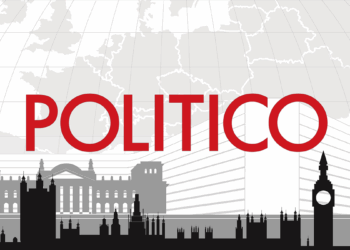When Fidel Castro first met Che Guevara in Mexico City in 1955, they began planning a guerrilla war that would sweep Cuba and change the course of Latin American history.
Mr. Castro became Cuba’s Communist leader, defying the United States for decades. Mr. Guevara, an Argentine, became a legend to his supporters and enemies alike, even after he was executed in Bolivia in 1967. In 2017, Mexicans commemorated their meeting with statues, linking Mexico to a pivotal moment in the Cold War.
But the statues were removed last week by a local Mexico City mayor, setting off a political firestorm that has drawn in the country’s president and reignited a debate about how to recognize a divisive history.
The local mayor, Alessandra Rojo de la Vega, said the statues were improperly installed and that the men should not be honored, calling them “murderers” who “continue representing a lot of pain.” She pointed to people who were silenced, jailed and killed under Mr. Castro’s nearly half-a-century reign, and to how Cuba still struggles with food and electricity shortages.
“I understand that there are people who see Fidel and Che as their revolutionary figures, but governing isn’t about choosing which victims to show solidarity to,” Ms. Rojo de la Vega said in an interview.
But her actions have provoked protests and condemnation, including from Mexico’s highest office. President Claudia Sheinbaum, who leads the leftist Morena party, denounced the removal this week, calling it “total intolerance” and “illegal.” She said Ms. Rojo de la Vega’s argument was “hypocritical,” because the local mayor had once vacationed in Cuba.
Ms. Rojo de la Vega, 39, argued her actions were legal and said that her trip to Cuba was 10 years ago, before she ran for office, and she has since learned more and developed her position.
She also drew attention to past decisions of Ms. Sheinbaum, who was the mayor of Mexico City before she became president.
In 2020, Ms. Sheinbaum had a plaque commemorating Gustavo Díaz Ordaz, a former Mexican president known as a right-wing authoritarian, removed because it “alluded to an era of repression and ignominy in the country’s history.”
That year, she also oversaw the removal of a Christopher Columbus monument, calling it part of an effort to “decolonize” the city’s statue-filled main boulevard.
So Ms. Rojo de la Vega — who is not a Morena member — said she did not expect a controversy when she had the statues hauled away. “In my opinion, we were acting the same way” as Ms. Sheinbaum, she said.
“You have to be consistent,” she added. “I don’t think a dictator is any less of a dictator if they’re from the left, the center or the right.”
The statues were first installed in late 2017 by Ricardo Monreal, then the municipal chief and still a key politician in Ms. Sheinbaum’s party. The cast bronze figures, weighing over 550 pounds with their bench, depicted the men seated and in conversation, and cost roughly $32,000 in public funds then.
The statues, which were once vandalized with paint, were removed in 2018 because of inadequate government approvals. A city committee that oversees public monuments approved their re-installation in 2020.
Ms. Sheinbaum said that any removal must be decided by the committee, which said this week that the statues were improperly removed.
Ms. Rojo de la Vega argued that the committee does not have authority over art paid for by the municipality, citing Mexico City’s 2017 Constitution, which gave municipalities more autonomy.
Since taking over as local mayor in October, she said, her office has heard weekly from residents complaining about the statues.
But people in the area have also defended the memorial. On Sunday, more than 200 people gathered where the statues once sat and demanded they be reinstalled. Some dressed in revolutionary outfits or donned Communist symbols, and many carried images of Mr. Castro, Mr. Guevara or the Cuban flag.
The Cuban Embassy in Mexico City did not respond to a request for comment. Its ambassador, Marcos Rodríguez Costa, wrote on social media last week, “The true Revolution is not made of stone or bronze.”
Others simply argued that the history should be memorialized regardless of politics.
“Beyond whether you sympathize ideologically or not, it cannot be denied that the Cuban Revolution historically changed the story of Latin America and the world,” said Olivia Garza Joa, a protest organizer and vice president of the José Martí Association of Cuban Residents in Mexico.
For now, the statues are covered in Bubble Wrap and hidden in a municipal facility. Although Ms. Rojo de la Vega has suggested auctioning them off to recoup some funds — Ms. Sheinbaum called that illegal — the local mayor said her team was in discussions with federal and city officials. The statues could be sent to a museum or another part of Mexico City, she said.
Mere feet from where the figures once sat, though, a bust of Mr. Guevara remained.
The municipality had not yet determined who paid for it, Ms. Rojo de la Vega said, and thus who had the authority to remove it.
James Wagner covers Latin America, including sports, and is based in Mexico City. A Nicaraguan American from the Washington area, he is a native Spanish speaker.
The post Removal of Castro and Guevara Statues Ignites Outcry in Mexico appeared first on New York Times.




